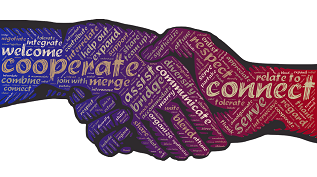America Needs Big Ideas to Heal Our Divides: Here Are Three

Editor’s Note: This blog post originally appeared here and is reprinted with permission. Dr. Putnam was a plenary speaker at the 2017 National Forum on Family Philanthropy.
American democratic institutions are under attack — with presidential insults slung at the independent judiciary, allegations of “fake news” and “alternative facts” undercutting public understanding of key issues, partisan gerrymandering and political polarization crippling the Congress, and travel bans targeting particular religious groups. As if these unexpected developments aren’t enough to wear our institutions thin, we are releasing a civic health check-up for the nation that shows disturbing trends since the lead author of this op-ed published Bowling Alone in 2000.
Trust in one another and in key institutions — the media, government, and the courts — are at historic lows. Such trust is critical to a functioning democracy and healthy communities. The percentage of Americans who say others can be trusted fell from 46 percent in 1972 to just 31 percent in 2016, with 36 percent of whites and 17 percent of blacks expressing such trust. In turn, the number of hate groups has more than doubled since 1999. It is no surprise that communities are fraying in places like Charlottesville, Ferguson and Chicago. As America becomes more diverse, we need bridges across racial and socioeconomic lines to build inclusive communities with more opportunities for all.
Even though the latest neuroscience tells us we are social animals wired to cooperate, Americans are increasingly isolated. New findings from the University of Southern California show that only 28 percent of Americans say they belong to any group with leaders they consider accountable and inclusive. In turn, 35 million Americans live alone, up 114 percent since 1960.
Four large-scale, integrating civic institutions built up during the 1900s have shrunk significantly since the turn of the century: churches and other religious congregations; unions; metropolitan daily newspapers; and political parties for grassroots participation sustained beyond specific campaigns. We wonder what institutions, if any, are taking their place.

Americans are also less active in important ways that undergird a healthy democracy. Regular volunteering is down from about 30 percent of the population in the aftermath of 9/11 through 2005 to less than one-quarter of Americans in 2015, notwithstanding waves of natural disasters that typically inspire Americans to lend a hand. Voting is down in presidential elections and significantly so in midterm elections since the 1960s.
This gloomy picture is moderated by some hopeful trends. There is a strong civic core of millions of Americans who do most of the voting, volunteering and community projects, with low-income Americans being the most likely to help strangers in times of need. The Internet has the potential to bring people together online and offline to share interests and organize to solve public problems. A recent survey of Millennials shows they are ready to take bolder action since the 2016 presidential election on issues such as civil rights, job creation, and healthcare reform. And we read daily of grassroots groups galvanized by our current troubles into taking action to reverse civic decay.
When trends in social fragmentation, cultural narcissism, political polarization, and economic inequality are examined together since the beginning of the 20th century, those trends have moved in virtual lockstep. There was increasing economic equality, political comity, social cohesion, and cultural solidarity from about 1900 to 1965, with a sharp U-turn in the 1960s, followed by plunges toward extreme inequality, polarization, fragmentation, and narcissism, culminating in today’s nearly universal agreement that the country “is on the wrong track.”
A wealth of studies shows links between civic health and economic and educational success, public health, safety from crime, and good government. The 1950s was hardly nirvana, especially for women and racial minorities, and in any event history doesn’t flow backwards. But every day’s headlines bring more proof that we need some big ideas about how to restore civic health.
So what’s to be done? Civic energy is going to have to come from the ground up to strengthen social cohesion, civic participation, and our ability to solve big challenges together.
One big idea to strengthen our civic stocks and create pathways to better outcomes in education and employment is universal national service – an opportunity for every 18-28 year-old to perform at least a year of civilian national service through well-known groups like City Year, Teach for America and Habitat for Humanity or to join one of the branches of our Armed Services. Such an idea would bring young people of different races, ethnicities, religious beliefs and backgrounds together in common service, while cultivating the leadership and problem-solving skills they and the country need.
Another bold idea would be to engage philanthropy in a $1 billion annual campaign to restore American history and civic education to its rightful place in American schools. We need “problems of American democracy” courses that teach students about the importance of bedrock American values, educate them through real-world experience about institutions that secure rights, check power, and enable public service, and provide practical skills to turn the wheels of a diverse democracy to address public problems.
A final idea is for community leaders from different parties and sectors to experiment boldly with ways to fix public problems. Sometimes promising ideas fail, but often they prove successful and spread nationally like wildfire. One dramatic example is the idea of high school, which went from enrolling 200,000 students in 1890 to nearly 2 million by 1920. Another is the national park idea, whereby citizens convinced their government to protect Yellowstone in 1872 and eventually led to the protection of more than 400 natural, historical and cultural areas today. Such serious civic exercises from the ground up could truly get America moving again.
